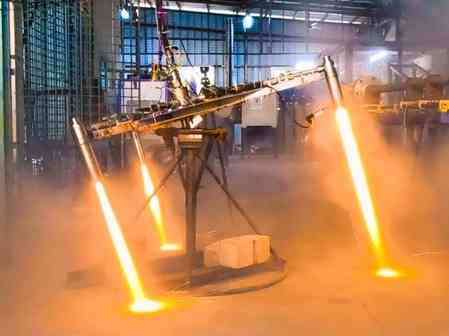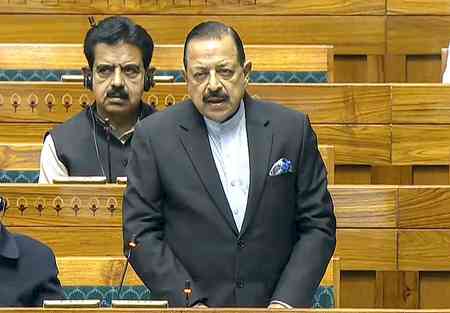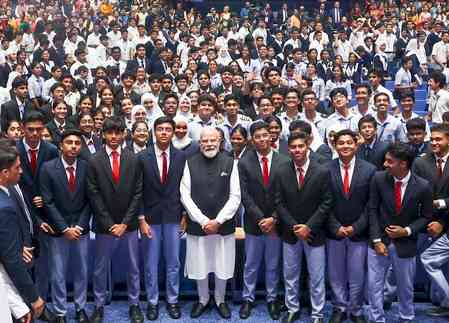IIT Madras aces vertical take-off and landing in aircraft, UAVs with hybrid rocket thrusters
Researchers at the Indian Institute of Technology (IIT) Madras have taken India a step closer to advancing vertical take-off and landing (VTOL) aircraft and an Unmanned Aerial Vehicle (UAV) with hybrid rocket thrusters.

Chennai, Oct 30 (IANS) Researchers at the Indian Institute of Technology (IIT) Madras have taken India a step closer to advancing vertical take-off and landing (VTOL) aircraft and an Unmanned Aerial Vehicle (UAV) with hybrid rocket thrusters.
In a sophisticated experiment that combined a real-time hybrid rocket thruster with a virtual simulation, the researchers achieved the necessary velocity for ‘soft landing’ -- a crucial feature for all craft ranging from planetary landing of an unmanned or manned exploration module to terrestrial landing of a VTOL aircraft.
Touchdown velocity is an important parameter to ensure safe vertical landings.
Researchers studied the feasibility of using the hybrid rocket motor for vertical landing platforms, as they are less complicated and safer compared to liquid engines. Moreover, hybrid rocket systems are gaining popularity due to their inherent safety and throttling capabilities, apart from the possibility of combining the advantages of liquid and solid rocket engines.
Currently, VTOL systems are complex and need high maintenance. Therefore, the research, published in the peer-reviewed International Journal of Aeronautical and Space Sciences, conceived the concept of a hybrid rocket thruster-powered platform as part of a system development study to bring out an effective propulsion unit for achieving VTOL in aircraft and UAVs.
“Vertical take-off and landing, as the name suggests, will enable an aircraft to take off and land vertically, eliminating the need for infrastructure like long runways. Because of this, VTOL capability will enable access to remote locations and rugged terrains where long runways and large airports are difficult to establish. Currently, helicopters are the system operating on those terrains; however, they face limitations in terms of speed, range, and efficiency compared to a fixed-wing aircraft,” said Prof. PA Ramakrishna, Department of Aerospace Engineering, IIT Madras.
“Once the VTOL system reaches the Technology Readiness Level (TRL) for commercial application, it will be a game-changer in both civil and military aviation. VTOL will help to decentralise air transport to multiple locations rather than a single big airport or an airbase. Such decentralisation brings significant strategic and operational advantages. This study is a precursor towards the development and demonstration of a proof-of-concept for a hybrid rocket-powered VTOL platform,” Ramakrishna added.
The experts highlighted that a significant contribution is the development of a hybrid rocket fuel that needs only compressed air as the oxidiser. This makes VTOL systems easier to integrate with aerospace vehicles, especially in scenarios where compressed air is readily available.
“Another interesting aspect of this work is the unique Hardware-in-the-Loop Simulation (HILS) framework that IIT Madras researchers have developed. HILS combines physical hardware testing with simulations to offer a cost-effective way to quickly develop complex systems,” said Dr. Joel George Manathara, Associate Professor, Department of Aerospace Engineering, IIT Madras.
He explained that while typical HILS setups involve a servo motor or microcontroller as the hardware interacting with the simulation, the team integrated a real, live-firing hybrid rocket motor directly into the HILS loop.
The hardware-in-the-loop simulation setup demonstrated a successful soft landing of the platform with a touchdown velocity of less than 1 m/s.
--IANS
rvt/


 IANS
IANS 











